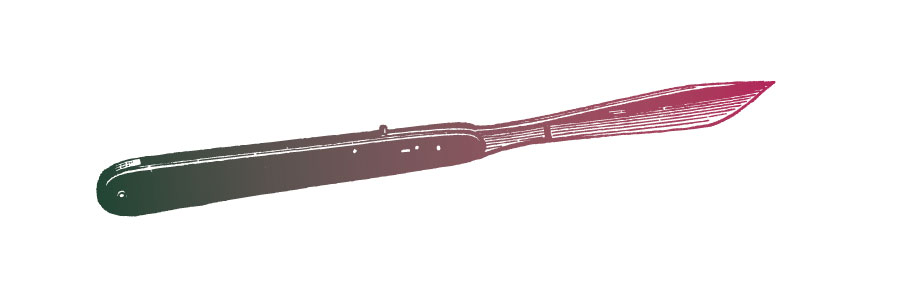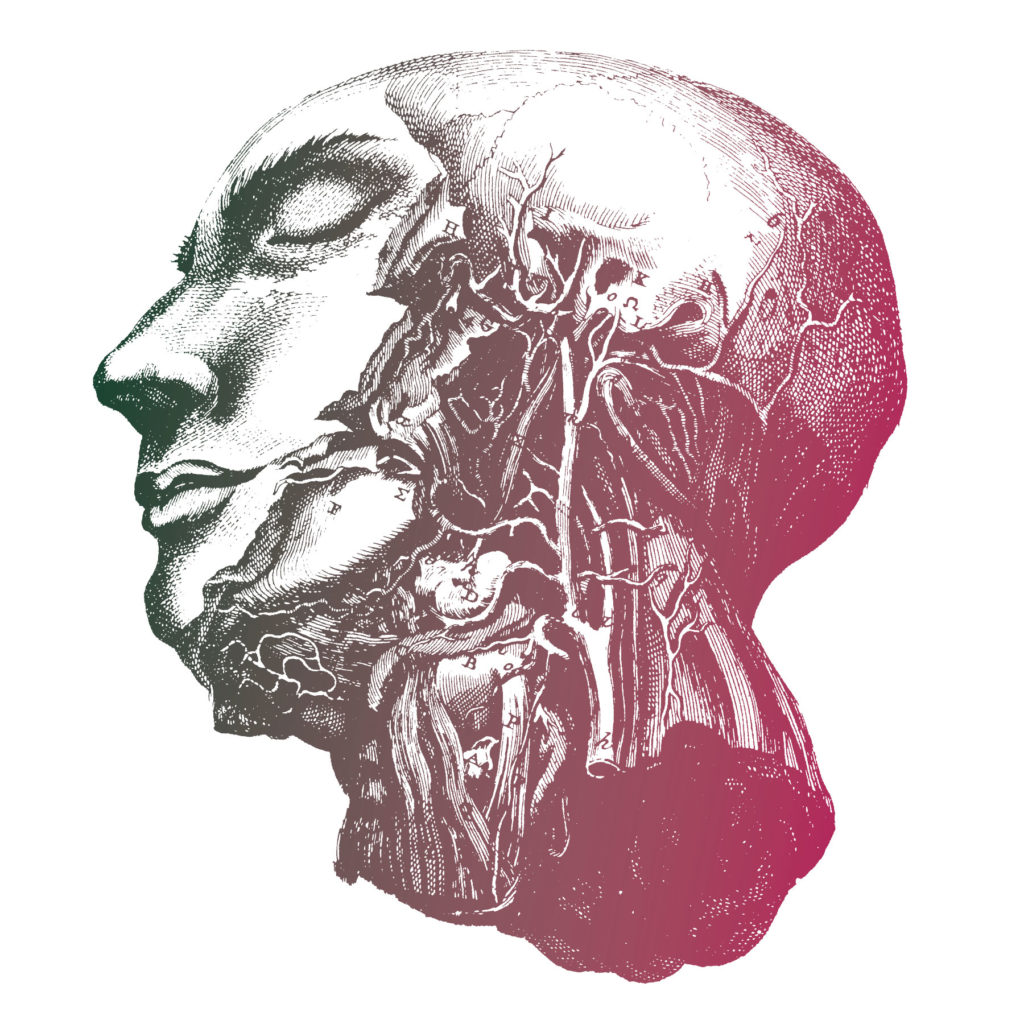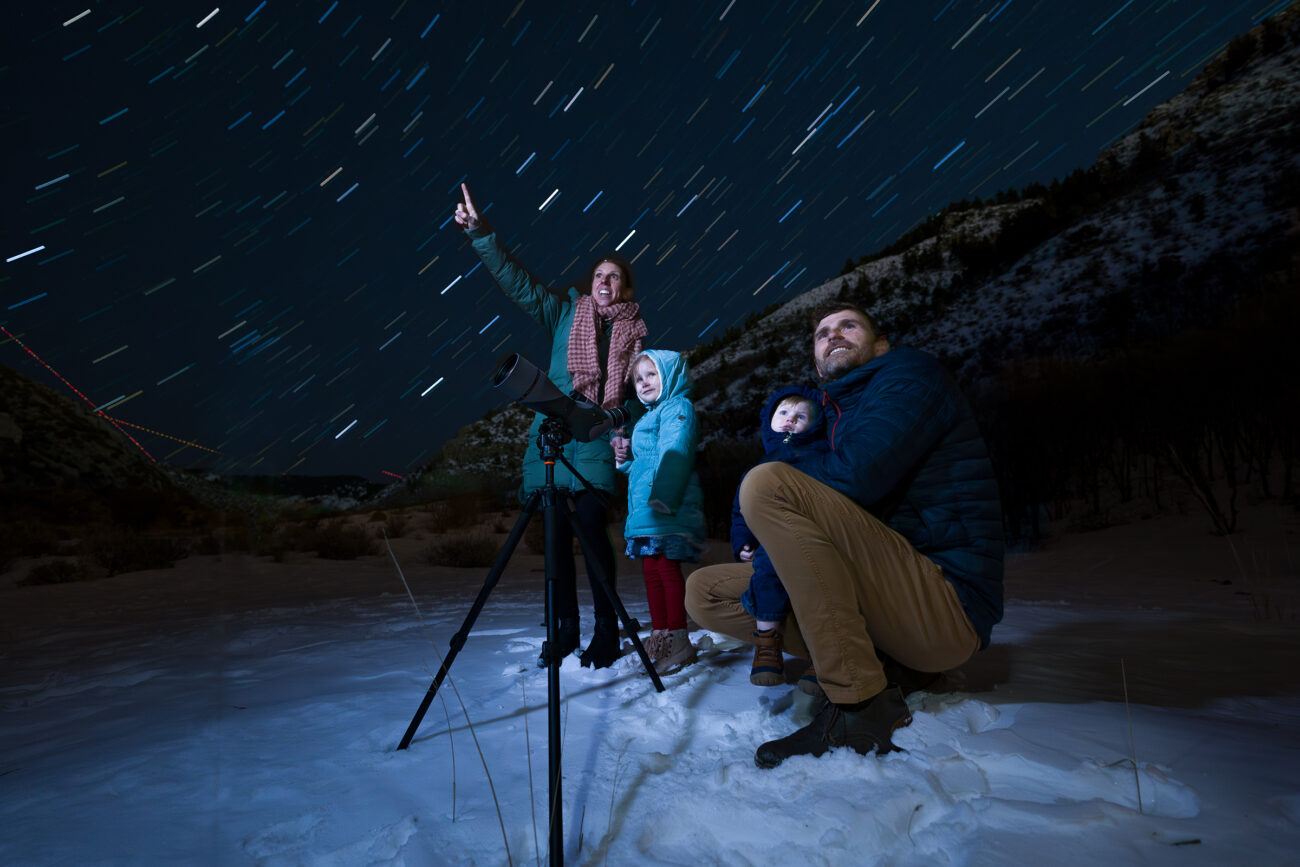Mortui Vivos Docent
“Get involved with science. Be an art exhibit. Become part of a tree. Some options for you to think about. Death. It doesn’t have to be boring.” - Mary Roach, Stiff: The Curious Lives of Human Cadavers
The body bags are hard to miss.
Seven altogether. Separated into two rows and covered with disposable surgical cloths. Boxes at the head of each metal exam table store instruments for human dissection: chisels, hammers, pliers, tongs, scalpels, and tweezers. Shelves along the back wall hold dozens of skulls, some plastic, some bone. This is where 400 Utah State University students come every year to learn from some of the world’s best teachers—the dead.
In the hallway, 20 Highland High School students wait for their chance to tour the anatomy laboratory in USU’s biology and natural resources building. Three teen boys laugh loudly, seemingly unaware of a signature tell—a nervous jiggling of their legs. A bearded man emerges from the room wearing a white lab coat, burgundy dress shirt, and cream colored tie. Andy Anderson, director of the cadaver lab, ushers in the next round of students with a wave, a pink name tag with a skull and cross bones affixed to his chest.
“They usually come in pretty timid, but by the end they don’t want to leave,” he whispers.
The students perch on metal stools lining the perimeter. More foot jiggling commences. Anderson stands in the center of the room to deliver a speech he has given hundreds of times over the last 20 years.
“They are all volunteers,” he says, gesturing toward the tables. “All people who designated in writing prior to their deaths that they wanted to be cadavers.”
Anderson’s voice is a salve. Warm and soothing, but firm. Teach so others may heal.
Being young people, he continues, you might wonder, “Why would anyone in their right mind want to be a cadaver? Why have I signed up to be a cadaver after my death?” He pauses. “The most common reason people volunteer for this process is they want my students here at the university, and visiting students like yourselves, to learn on dead bodies so later on in your lives and your careers you don’t make a horrific mess out of living bodies.”
Humans have dissected other humans in the name of medicine since 300 BC when the ancient Greeks established the practice. Cadaver dissection remains a learning exercise at medical schools the world over. It involves handling the dead. Disassembling the dead. So that we can learn from the dead. Anderson points to the sign over the door. “Mortui Vivos Docent. The dead teach the living,” he repeats. “you will find that sign in most cadaver labs in the world.”
“Watching [students] get their first scalpel to open a body up … it’s quite illuminating to them. And you can’t do that with plastic models, you can’t do it with electronic tablets. I am a very firm believer in using real cadavers.” – Andy Anderson
Andy Anderson didn’t exactly choose his profession. After high school he set out in a general direction—biology—found a groove in the Army as a clinical lab scientist, and followed it around life’s twists and rises. In civilian life, Anderson earned his doctorate in medical microbiology and came to USU 36 years ago to lead its now defunct Clinical Laboratory Medicine Program. In 2000, Anderson inherited the cadaver lab because he was one of the few people in his department with a medical background, he says. It’s been a welcome shift.
“A lot of people aren’t thrilled with going to work,” he says. “I like going to work.”
While some people might shiver at the idea of confronting one’s own mortality every day, for Anderson, it’s just a passing thought. He focuses instead on what can be learned. He teaches courses in microbiology, bioethics, human dissection, and human physiology, and each one broadens his perspective.
“Most of what I see, what you see on the whiteboard,” he says, “is that there is a story. And the students want to see what the story is.”
The walls of the lab are a testament to Anderson’s teaching. Framed letters and emails from former students titled “long lost student” and “thank you” decorate the lab. Some write from medical school, thanking Anderson for pushing them so hard as undergraduates. Others have become nurses, physical therapists, and teachers. All of the notes echo the same sentiment: “You have devoted your life and career to teaching and the world is better off for it.”

Between 1,500–1,700 high school students visit the human anatomy lab each year and most are interested in pursuing careers in medicine. Anderson shepherds them into the cadaver lab with an earnest enthusiasm. He wants them to ask questions. To feel the organs displayed. To be inspired by what they see. So that they will go into the field and improve it.
“Watching [students] get their first scalpel to open a body up … it’s quite illuminating to them,” he says. “And you can’t do that with plastic models, you can’t do it with electronic tablets. I am a very firm believer in using real cadavers.”
Advances in technology may one day make labs like these obsolete. These labs can be expensive to maintain. Some medical schools have begun using mannequins and computer dissection programs rather than cadavers. But for Anderson, using human bodies to teach anatomy is sacrosanct. So much so that he will take this belief to the grave.
“I’ve been here 36 years, and I plan to be here another 20, and then come back here after I am dead,” Anderson says. “I figure I’ve been an educator in life, I will be an educator in death.”
“REPAY OUR DEBT”
Kathleen was 35, a physician in the Salt Lake City area, and dying of metastatic breast cancer. When she arrived at USU’s cadaver lab she had undergone a bilateral mastectomy and had additional tumors in her brain, lungs, and gastrointestinal tract. She chose to donate her remains to science because her body was yet another casualty of humankind’s war with cancer. We win only if the medical community learns something from those who lose their lives to the disease. Kathleen’s story is just one that Anderson tells students before they lift a scalpel.
For the aspiring medical professionals in Anderson’s courses, cadavers are often the first patients to show students the effects of age and illness on the the body—inside and out. The organs the dead leave behind often tell the story of disease so that other people may live longer and, hopefully, better. But for now, there will be many more Kathleens wheeled through this door.
Every July, new cadavers arrive from the donation program at the University of Utah and are disassembled by USU students studying human anatomy and physiology. Heads come off, arms, legs, pelvises, and skin, too. Hearts, livers, and brains are removed. After one year, Anderson explains, the cadavers are sent to Redwood Road in Salt Lake City where they are reduced to piles of bone and ash and returned to family members in a box.
“Like this one,” he says passing one off to the Highland High students.
Then Anderson relays the rules of the lab. The first two are routine—no cell phones and limit chatter, but when listing the third rule, Anderson’s voice hardens: do not make fun of the cadavers. Respect these patients.
“That is the way we repay our debt,” he says.
As students tie on plastic aprons, one turns and worriedly whispers, “Will the cadavers bleed?”
“It’s not very often you get to hold a human brain in your hands with the eyeballs attached is it?” – Jodie Coleman
The class is divided into three groups led by Anderson and two USU student aides, including Jodie Coleman, a medical interpreter for deaf patients at Intermountain Health on a path to becoming a nurse practitioner. She sewed the phrase “Miss Hudson took my skull” to the back of her white lab coat, an homage to Sherlock Holmes. Coleman keeps a dollar coin in her pocket in case anyone can guess the reference. No one has, yet.
She begins with a cadaver named John. He is having his central nervous system removed. It looks like a series of cords strung into the shape of a stick figure. Our brains are kind of the same consistency of Jello Jigglers, Coleman says. “It’s not very often you get to hold a human brain in your hands with the eyeballs attached is it?”
One of her dissection projects was to show the various lobes and cavities of the head. She removes a surgical cloth covering the head of a cadaver named Karla that has been cut into three sagittal sections with a wire saw.
“I’m very very grateful to Karla,” Coleman says, gently handing off one section. What the students are seeing, and for some, holding, is intense. Their faces register the moment. Wide-eyed. Close-lipped. Curious. And for a few, instead of peering into the delicate spaces around the naval cavity, they lean away to see.
One table over, whatever discomfort the student apprehensive about the cadavers bleeding has vanished. “Can I touch?” she inquires about a tumorous liver.

Anderson manages to normalize an experience that doesn’t quite feel normal. He gives students permission to be there. To look. To touch. He introduces his group to Joyce, a former nurse, and hands them her digestive tract. Each person holds a piece extending from her tongue and esophagus and down through the stomach and intestines.
“This is the anus,” Anderson says. “We all have one.”
His voice is gentle. He talks slowly, clearly, and occasionally cracks a joke to put people at ease. He presents scenarios students might face one day in an emergency room.
“What bothers me more is [living] patients,” he says. “Because real patients are suffering and they are hurting. This is a good place for my students to learn things.”
At the far end of the room, Coleman opens a drawer housing the medical devices and prosthetic parts classes have recovered from cadavers over the years. Metal shoulder replacements. Prosthetic hip joints. Breast implants. Every 20 to 30 minutes a small alarm goes off, the battery still works from a pump likely used to deliver pain medication to someone’s spine. The patient is gone but the battery lives on.
FROM INSIDE OUT
Coleman recalls shaking with excitement when she enrolled in Human Anatomy. To her, it was the epitome of learning. She believes the experience of combing through every layer of the human body will make her a better practitioner and has given her greater appreciation for the body’s biological functions than anything learned in a classroom—even Andy’s, she says.
“When I actually go to deliver a baby, I understand the anatomy from the inside out,” she says. “There are things that you learn by doing that you can learn in no other way. Not from a book, not from a 3D app on your phone. There is something from actually doing it that you understand and you know how the body works.”
But the learning doesn’t always come easy.
Students respect Anderson because of how much he knows, but they hate his tests. We started out with maybe 160 students in microbiology, Coleman says, and we have probably 40 left in the class.
“Andy is infamous, but he also is an institution,” she says. “He wants us to know everything we can know about something, and that’s why he is so detailed and demanding. But it helps us to grow and become better and to want to be better.”
“The problem I have with computers and simulations is people are so unique and you never really know what they are going to be like on the inside. There is nothing like opening up a chest and being like ‘what is that?!’ It looks different in a textbook or on a computer screen than it does in a person.” – Jayme Warner
Coleman carefully puts Karla’s pelvis back inside a bin of ethanol and water and closes down the lab for the day.
“We take care of these people because they really are the first people that we cut into with a scalpel, and these are the first people that we suture,” she says. “They are our first patients. Like, that’s my Karla, forever.”
Senior Jayme Warner harbors similar feelings. She remembers wanting to be a doctor while a student at Edith Bowen Laboratory School, and like Coleman, she believes working in the cadaver lab will prepare her for the road ahead in medical school. She has given about 100 tours so far and always learns something new, she says.
But Warner also appreciates the personal nature of the experience. The cadavers all had lives before their bodies came delivered in bags to the lab. They have names. And Anderson makes sure the students know them.
“Respect their life and the gift they give to us,” Warner explains. “That was someone’s grandpa or brother or mom.”
The names and occupations of the cadavers are posted on whiteboards above each table along with a critical piece of information: their medical history. This allows students to understand how diseases manifest and see variations in the human body. That’s an experience unique to cadaver labs, Warner says. “The problem I have with computers and simulations is people are so unique and you never really know what they are going to be like on the inside. There is nothing like opening up a chest and being like ‘what is that?!’ It looks different in a textbook or on a computer screen than it does in a person.”
Working on cadavers familiarizes students with human anatomy in an intimate way. They see nerves embedded in muscles and bones. And the exercise can provide redirection in career choices and help build their confidence. The first time Warner opened the anterior wall of a person her hand was shaking.
“I’m going to hurt someone so bad,” she recalls thinking. But then she remembered why she is there. “You are not causing harm. It will be for the sake of helping, for the sake of healing.”
The exercise science major is a member of the USU Cadaver Club, an organization created to prepare students to provide tours of the lab and to teach others, she says. “It gives people exposure to the human condition—and that includes death.”







